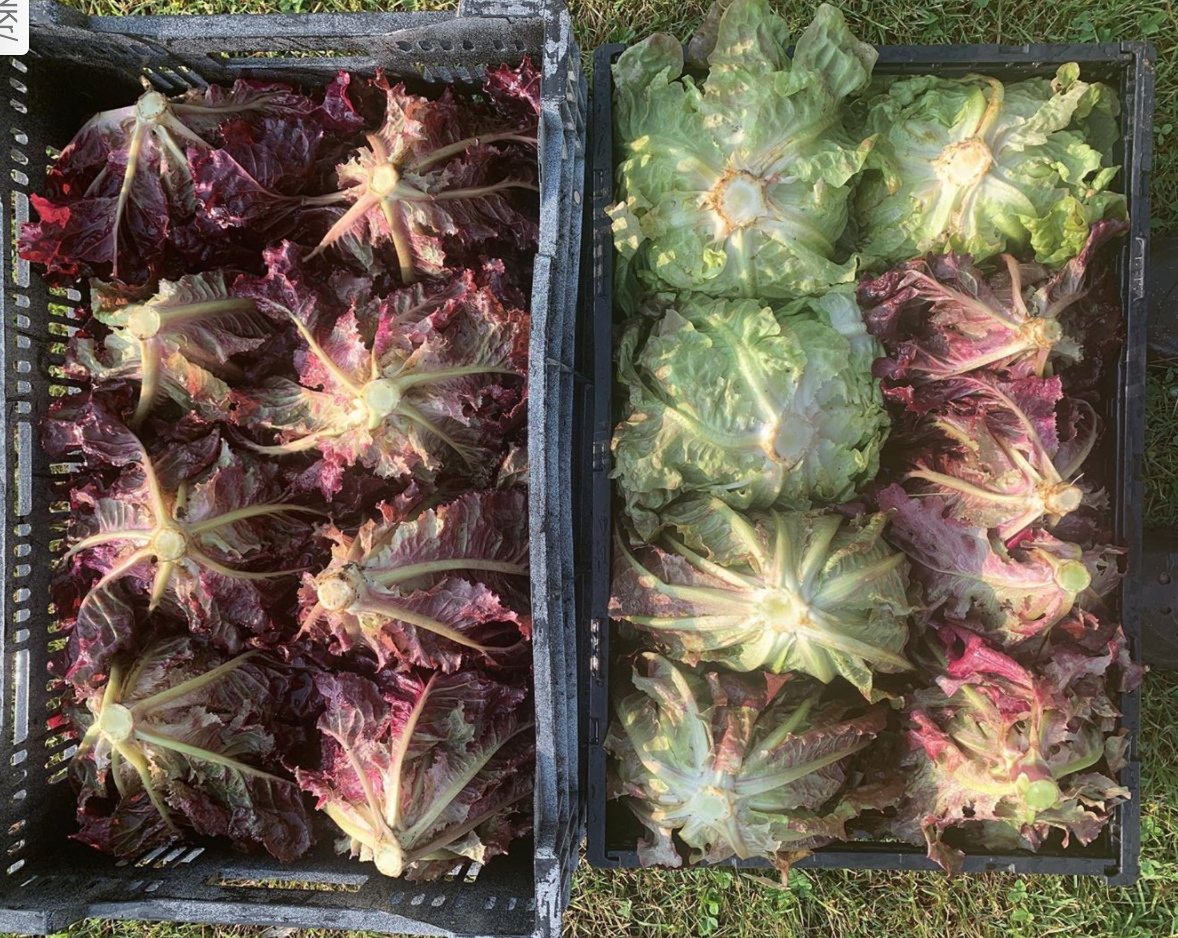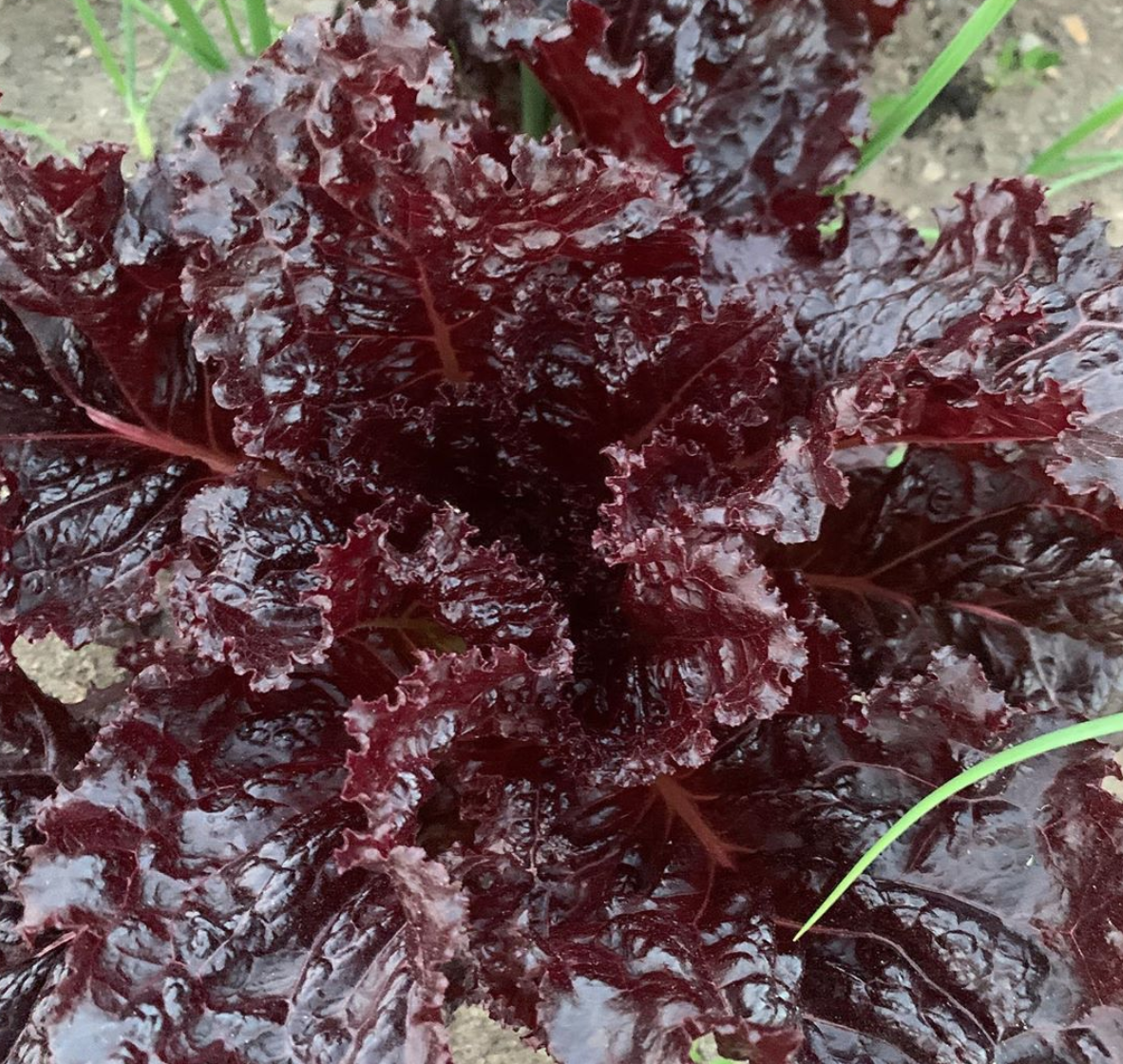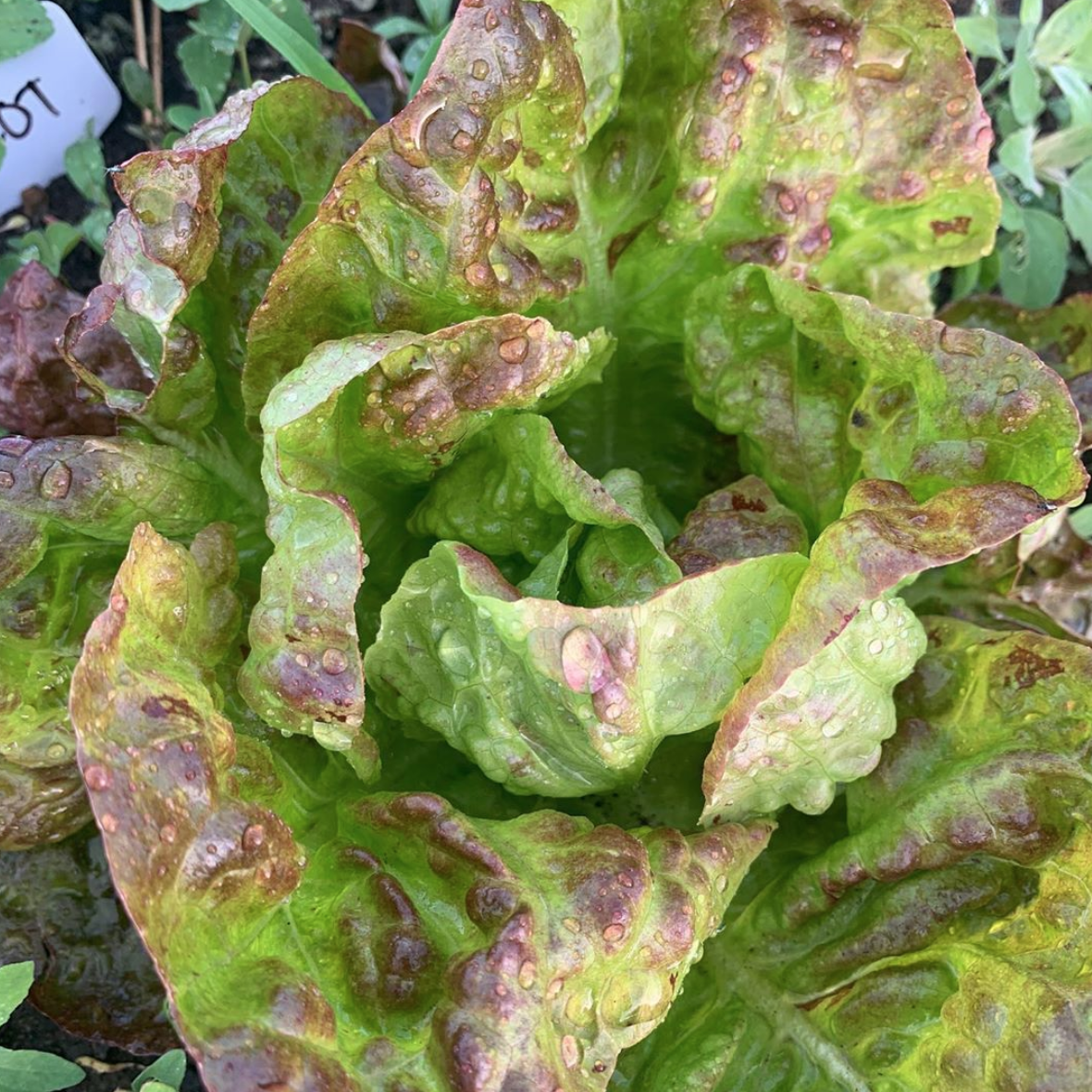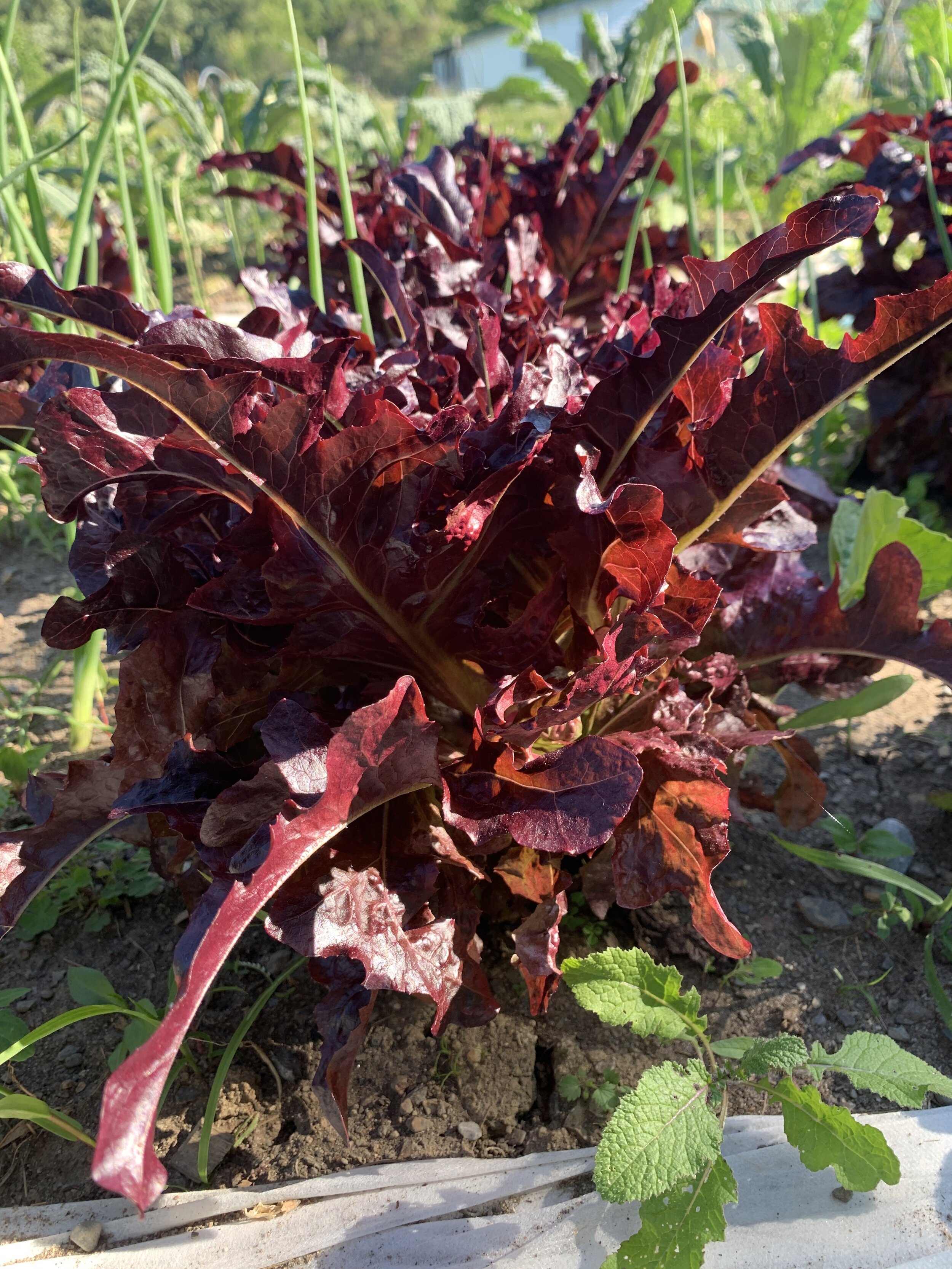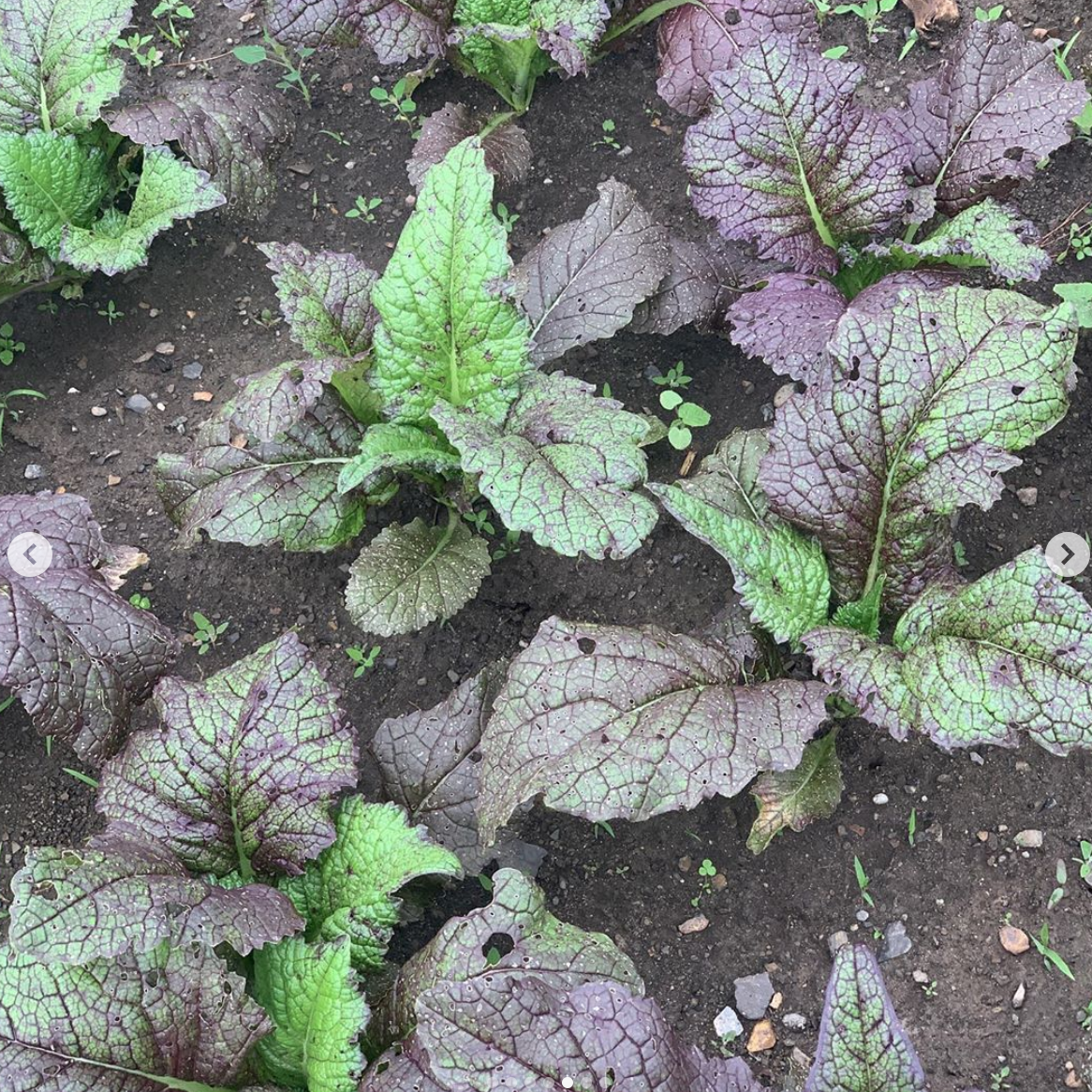Let us talk about Lettuce...
Lettuce seems like such a simple vegetable and possibly even an afterthought to all the other delicious goodies that can be on your salad plate. It is almost like lettuce is the background canvas for the other items to shine, right?!
Over the years with this farm, I've begun to shift my view on lettuces. There are so many varieties in every color and taste imaginable, that they can also be an important character in the story that is your salad-- not just the base.
When you know what kind of a salad you want, perhaps how it might complement the rest of your meal or stand on its own as a meal, then you can start to design a salad with flavors that work together for a complete experience. In some instances, you may want a super colorful salad to round out the visual effect on your plate. Or perhaps you want a little spicy kick to your salad to go along with a sweeter dressing or tangy cheese. Whatever it is, the lettuce itself can be a vital part of the entire food experience you're aiming for.
But first, let's talk about growing lettuces...
If you've read any of my posts before, you know that I'm a huge advocate of heirloom varieties of fruits and veggies. Using heirlooms brings a great range of diversity to your garden (and your plate) which is great for taste, nutrition and for the health and wellness of your garden. This goes for lettuces as well, where you can find a large variety of heirloom seeds for all your lettuce desires. My top pick for heirloom seeds is Baker Creek Heirloom Seed Company
In choosing lettuces, there are a couple of considerations to keep in mind. First off are if you want to grow cut lettuce or head lettuce (or both). Cut lettuce is the kind of lettuce you find pre-cut in salad mix bags at the store or farmer's market. Truthfully, most varieties can be used as a cut lettuce because you harvest it when it is small and young. However, there are also wonderful pre-made seed mixes for cut lettuce salads so you don't have to grow each variety and mix it yourself. You can find braising mixes (heartier varieties), mesculin mixes, spicy mixes and more. Usually these types are what they call "cut and come again" meaning you harvest them and they'll grow back.
If you want head lettuce, meaning, you want to grow a lettuce to be a full head that you harvest at one time, then you may choose specific varieties that make lovely big full heads. There are main categories of those such as: Buttercrunch types, Oak Leaf types, Romaine types, etc. And then, there are some unique heirloom varieties that don't fall into any of those categories! <--- those are my personal favorites: the ones that don't fit into a box.
On my farm, for customers, I have found over the years that I much prefer head lettuces to salad mixes. I find that they are much easier to maintain and less labor intensive to harvest and prep. For personal use, a salad mix is a great choice because you can cut what you want for that day's meal and not have to use a whole entire head at once. When I'm at the grocery store, I much prefer to purchase a head of lettuce instead of a bag of mix lettuce, so I lean heavily towards heads. And I'll ALWAYS say: grow what you enjoy to eat!
Another consideration to keep in mind is the climate and time of year you are growing. Over the few years I've been growing food (so far), I've learned the hard way that some types of lettuce do better in cooler temps and others can handle the warmth. Because of this, I change my varieties throughout the season to adapt for the temperatures. You'll find that once warmer weather hits, the cool season lettuces will do what is called bolting. They'll pop up a shoot and start to flower, thinking that it is time for them to propagate. Although bolted lettuce is still edible, it often gets quite bitter and less tender. So, in the cooler parts of the year I grow the buttercrunch and other tender leaf varieties. The Romaine types or varieties from warmer regions will do better in the warm parts of the summer.
Finally, there is taste and color to consider. Some lettuces are sweet, some spicy, some bitter. Some are soft and tender and others have more of a crisp to them. And, they have a whole range of leaf shapes and colors from light whites to bright greens to speckles, stripes, browns, and deep deep reds. I think it is nourishing to the eye and thus the spirit to have a plate that looks as beautiful as it tastes so I like to choose a mix of colors for my salads.
SIDE NOTE: there are lots of other leaves and green bits that make wonderful additions to your salad such as: certain types of mustard greens, arugula, spinach, tatsoi, bok choy, herbs, pea tendrils, edible flowers, and even a range of seeming 'weeds' that can be a nutritious addition. So get creative!!
To give you an idea of what I'm growing this year, here's what my head lettuce garden is like:
Spring Planting:
Head Lettuces: Bronze Beauty, Merveille des Quatre Saisons, Merlot, Solar Flare, Lunix
Other Greens: Arugula, Spigarello Leaf Broccoli, Japanese Giant Red Mustard, Pink Mizuna, Katsuona
Summer Planting:
Head Lettuces: Devil's Ear, Deer Tongue, Forellenschluss, Parris Island, Black Seeded Simpson, Lolla Rossa Darky
I've not yet decided what I want to plant for a Fall Planting, but I may revisit some of the Spring varieties that I most loved.
A note about Arugula: My favorite salad green is arugula, hands down. And when I'm not in season myself, I often buy "Baby Arugula" in the store. For a long time I've wondered why my arugula never seems to have that "baby" stage for little leaves like they pack in the store. I recently learned that there are two types of Arugulas and they are completely different genus from one another. The one most used for baby arugula is actually a perennial plant often called Wild Rocket. The scientific name is Diplotaxis tenuifolia, which I would go by if you are looking for seeds for this variety. It is radically different than the annual, cultivated Arugula - Eruca Sativa. They each have a different color flower and growing style. So, just good to know if you are a gardener thinking about growing Arugula!
And now to use lettuce on your plate...
I've been thinking a bit about lettuces and salads as our season is changing here and thus my lettuce varieties are adjusting a bit from a cold-season salad to a summer salad. You may have ideas in your head about what additions to a salad say "summer" or "fall" to you such as certain kinds of seasonal fruit (strawberries now, apples in fall) or certain veggies (carrots, parsnip, or roasted squash in fall, cucumbers and tomatoes in summer). But, the lettuces you use can also give a hint to the season.
Just like with growing, the hot weather heads of lettuce, like a romaine variety are great in the summer when you want a juicy, refreshing crisp bite to your salad. That crisp also counters the other summer seasonal veggies that are softer like berries, cucumbers or tomatoes. In the cold season, you may like the lettuces that have a bit more flavor and peppery bite like an arugula or mustard because the nutrients that give that spice actually also warm up your insides and boost your immune system.
I've also found that different kinds of lettuces are better for different kinds of dressings. The warmer weather greens, like a romaine-type variety, are a sturdier leaf with more crisp to it. They do better with the thicker, creamier dressings like a ranch, caesar, or creamy green goddess type. The more delicate leaves of a cool weather lettuce or baby salad mix do much better with a light vinaigrette type dressing. Knowing this, that then starts to inform the rest of the salad composition. And, I just LOVE that there is a thing as a "Composed Salad", which is considering the entire composition of ingredients to create a whole singular expression on the dish or platter without being tossed together in one big (delicious) mess! Here's a great article about designing a Composed Salad.
I hope that this journey through Lettuces has sparked some creative ideas for you for your next salad (or two, or three!). I'd love to hear what you love about lettuces or your favorite variety to grow or eat in the comments. If you have any questions, I'd love to know that as well. Below are a few recipes that I turn to time and again!
~Missy
My Favorite Salad:
A Fall salad with: Arugula + diced Apple or Pear + Walnuts/Pecans + Goat Cheese + Honey-Mustard-Lemon Vinaigrette
Honey-Mustard-Lemon Vinaigrette:
Juice of 1/2 Lemon
4-5 TBSP Olive Oil
1tsp - 1 TBSP Honey (depending how sweet you want it, start with small amount & add as needed)
1-2 TBSP Mustard
1-2 TBSP Water
1 tsp favorite dried herbs -- I like either Tarragon or Herbes des Provence
Salt + Pepper to taste
Put all ingredients into a container and either whisk or immersion blend until thickened.
A Creamy Dressing Recipe: Garlic Scape Green Goddess Dressing
Here is a light, creamy dressing perfect for dipping crudite as well as drizzled on a salad.
Ingredients:
3/4 cup Greek yogurt
1 c. loosely packed flat-leaf parsley
2 garlic scapes, roughly chopped
1/2 avocado (pit and skin removed)
1 tsp apple cider vinegar (or lemon juice)
1/2 lime of juice
salt & pepper to taste
water to thin dressing to taste
Instructions:
In a food processor, add yogurt, parsley, garlic scapes, avocado, vinegar and lime juice. Process until smooth.
For a thinner dressing, add water, 1 tablespoon at a time, and process until at a desired consistency.
Add salt and pepper to taste.
(recipe from: teaspoonofspice.com)
SOME MORE PHOTOS OF LETTUCES FROM OUR GARDENS:

